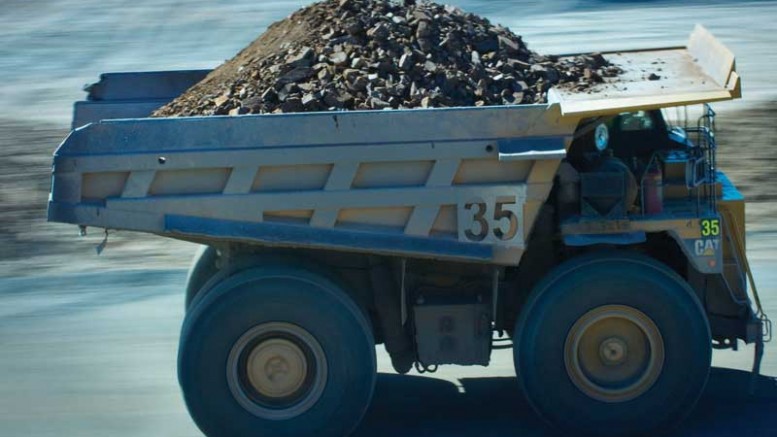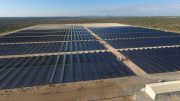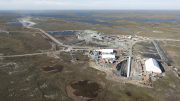The following is an edited release by the International Lead and Zinc Study Group (ILZSG), which held its spring meetings in Lisbon, Portugal, on April 27.
For lead, the ILZSG anticipates that global demand for refined lead metal will rise 2% to 10.8 million tonnes in 2016. In China, increased usage in the automotive and telecommunications sectors will be partly balanced by less demand in the e-bike market, resulting from slower sales growth and increased competition from lithium-ion batteries.
European lead demand could grow 3.5%, due to anticipated rises in the Czech Republic, Italy, Spain and the United Kingdom. After falling 5.2% in 2015, a partial 1% recovery is anticipated in the United States. Growth is also forecast in India, Indonesia, Japan, Thailand and Turkey.
As for supply, global lead mine output could increase 0.5% to 4.6 million tonnes, as a consequence of a 9.7% rise in China. An expected 6.1% fall in production outside China will owe primarily to reductions in Australia from MMG’s Century mine closing last August, and cutbacks announced by Glencore, CBH Resources and Perilya.
After reaching a record 1 million tonnes in 2015, Chinese imports of lead-in-concentrate could fall to just under 900,000 tonnes in 2016.
An anticipated 2.3% rise in global refined lead metal production to 10.9 million tonnes will be influenced principally by increased output in China and South Korea, where Korea Zinc recently commissioned a 130,000-tonne-per-year capacity lead plant in Ulsan.
Having taken into account all of the information recently received from our organization’s member countries, we anticipate that increases in refined metal supply — most notably in South Korea — will result in a global refined lead metal surplus of 76,000 tonnes in 2016.
Zinc outlook
World usage of refined zinc metal is expected to increase 3.5% to 14.3 million tonnes in 2016. This rise will be driven by a 4.5% increase in China, where demand would benefit from continued infrastructure investment.
After rising 3.2% in 2015, usage in Europe could stay stable in 2016. Strong growth of 13.1% is anticipated in South Korea. Increases are also forecast in India (4.1%), Japan (4.2%) and the U.S. (3.1%).
Regarding supply, a sharp forecast fall in zinc mine production outside China of 9.4% is due to a combination of mine closures and recently announced production cutbacks. Chinese output, which relies on production from a large number of small mines, is forecast to grow 12.4%. Overall global zinc mine output could fall 1.4% to 13.3 million tonnes.
A predicted 46% reduction in Australian production is a consequence of the closure of MMG’s half-a-million-tonne-per-year-capacity Century mine last August, cutbacks at Glencore’s operations at Mt. Isa and McArthur River, and recently announced reductions at CBH Resources’ Endeavour mine and Perilya’s Broken Hill operation.
Production could be lower in Ireland — where the Lisheen mine closed in November — as well as India, Kazakhstan, the Democratic Republic of Korea, Saudi Arabia and the U.S., mainly from suspended operations at Nyrstar’s mid-Tennessee mines.
Chinese imports of zinc-in-concentrate are expected to be significantly lower than the 1.4 million tonnes recorded in 2015.
Global refined zinc metal production could increase 0.5% to 13.98 million tonnes in 2016, with a forecast 4% increase in China largely balanced by a 2.3% reduction outside China.
In the U.S., a 24% reduction in output will mainly owe to continued problems at Horsehead Holdings’ new solvent extraction plant in Moorseboro, N.C.
Despite the fact that lower output is also expected in a number of other countries, including Canada, India and Kazakhstan, current forecasts indicate that these reductions will be more than balanced by anticipated rises in China, South Korea, Namibia and Norway.
However, taking into account the predicted decrease in zinc mine supply, it is possible that zinc metal production expectations in some countries may be subject to downward revisions later in the year.
Information recently collected from ILZSG member countries indicates that global demand for refined zinc metal will exceed supply by 352,000 tonnes in 2016. This deficit is higher than that indicated by the group during its meetings last October, with the difference owing to cutbacks in mine production announced over the past six months.
— Formed by the United Nations in 1959, the International Lead and Zinc Study Group is one of the longest established international commodity organizations. Please visit www.ilzsg.org for more information.





Be the first to comment on "Lead and zinc demand set to rise strongly in 2016, says ILZSG"